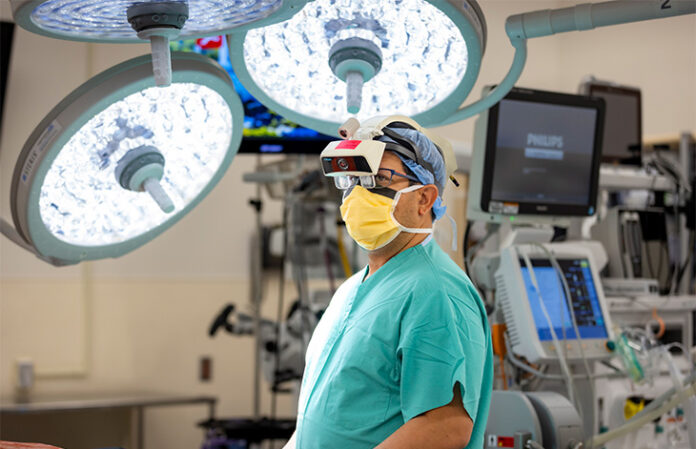This technology allows surgeons to visualize their patients’ anatomy without making a single incision
By KATIE HELLMAN — science@theaggie.org
Part of a surgeon’s responsibility is to cut into their patient in order to visualize and fix their medical issues. But what if surgery didn’t need to be so invasive? UC Davis Health’s spine surgeon Safdar N. Khan is one of the first surgeons in the United States to use augmented reality glasses during surgery, which allow him to view a patient’s spine in 2D and 3D without opening them up.
Augmented reality is a technology that incorporates digital information into a user’s real environment — this is different from virtual reality, where the user becomes immersed in an artificial world.
Augmented reality glasses allow Khan to make smaller incisions and more accurately perform procedures, reducing the potential for complications. Surgeries can also be done at a faster pace, leading to a shorter recovery time.
“Real-time augmentation of surgery usually involves the blending of acquired 3D imaging with surgical reference points,” a study by PubMed reads. “AR [augmented reality] is the addition of artificial information to one or more of the senses that allows the user to perform tasks more efficiently. This can be achieved using superimposed images, video or computer-generated models.”
Khan, a professor of orthopedic surgery and vice chair of surgical innovation in the Department of Orthopedic Surgery, believes that augmented reality will be utilized more frequently in medicine — especially by future surgeons who grew up in the era of technology and virtual reality.
“I think AR is the next step within the zeitgeist of surgical innovation, where we have to think outside the box to find solutions that match the challenges we’re seeing,” Khan said in an interview with UC Davis Health.
Khan has a plan to build an augmented reality studio through Aggie Square, a Sacramento-based innovation hub, to further the evolution of the technology.
“This is a first of its kind at UC Davis Health and demonstrates our firm commitment to fostering translatable technological innovation — and helping our faculty catalyze their entrepreneurial ideas,” R. Lor Randall, chair of the Department of Orthopedic Surgery, said in an interview with UC Davis Health.
UC Davis Health has already been making progress on the use of augmented reality in healthcare. The 3D Printing and Visualization (3D PrintViz) lab allows surgeons to view their cases in a hands-on, innovative way. It utilizes augmented reality to create holograms, and the virtual models can be analyzed and manipulated so surgeons can better understand how to best treat their patients.
As augmented reality applications continue to advance, they will pave the way toward improved patient care, safer procedures and a new future of medicine.
Written by: Katie Hellman — science@theaggie.org




